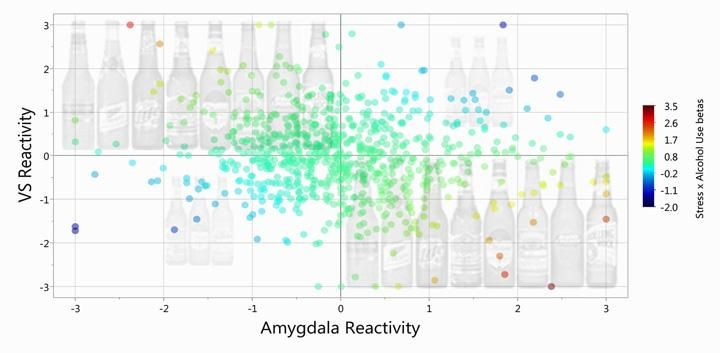Risk vs. Reward: Brain Activity Can Give Away How Likely You Are To Drink Or Have Sex

According to a pair of new brain-imaging studies, the way certain brain structures activate may be able to predict future high-risk behavior in humans.
Part of the ongoing Duke Neurogenic Study, which began in 2010, the studies focused on two brain areas that help with two opposite behaviors important for survival. The amygdala, which assesses threat, and the ventral striatum, which is reward-seeking, both play an important role in indicating how likely one is to participate in risky behaviors.
The original 2012 study focused on drinking behavior and used a sample of 200 participants.
Using non-invasive MRI, the researchers measured the activity in the two areas and found that having an overactive ventral striatum and an underactive amygdala was associated with problem drinking.
Ahmad Hariri, professor of psychology and neuroscience at Duke University conducted a confirmation study that confirmed this finding using a larger sample of 759 participants. Oddly, this study found that the exact inverse brain pattern (underactive ventral striatum, overactive amygdala) also seemed to predict problem drinking.
"We now have these two distinct profiles of risk that, in general, reflect imbalance in the function of typically complementary brain areas," Hariri said in a press release. "If you have high activity in both areas, no problem. If you have low activity in both areas, no problem. It's when they're out of whack that individuals may have problems with drinking."
Hariri suggested that those with the overactive ventral striatum may be drinking because of impulsivity and a low danger signal from the amygdala. The participants with an overactive amygdala and low activity ventral striatum, however, usually have a lower mood and are perhaps drinking to cope with stress.

Balance between the activity of the ventral striatum and the amygdala can also be an indicator of sexual behavior, according to the second of Hariri’s studies.
The research, which consisted of asking 70 heterosexual men and women how many new sexual partners they acquired over an 11-month period, was led by graduate student Elizabeth Victor, and showed a difference between men and women when it came to brain activity.
For the more sexually active men, the same brain activity associated with problem drinking (high ventral striatum and low amygdala activity) was associated with higher promiscuity than those men with balanced activity in the two areas. More sexually active women, however, showed a different pattern—they had higher activity in both the ventral striatum and the amygdala.
The reason for this was unknown to researchers, and Victor pointed out that measuring brain-based predictors of sexual behavior is mostly new territory. Hariri suggested that the amygdala may function differently in men and women. Amygdala activity in women may affect general awareness and arousal as opposed to a focused detection of danger.
Now that these two regions can be monitored for activity predicting certain behaviors, adding a third region of the brain to the mix — the prefrontal cortex, responsible for decision-making — could help researchers predict even more accurately who may engage in risky behaviors.
Developing these brain-based predictors is important because they can alert individuals to being at risk when they are unaware of the possibility.
"By knowing the biology that predicts risk, we hope to eventually change the biology — or at least meet that biology with other forces to stem the risk," said Hariri in a press release. "The key is that these are patterns before problems emerge. This knowledge brings us one step closer to preventing the problems altogether."
Sources: Nikolova Y, Knodt A, Radtke S, Hariri A. Divergent responses of the amygdala and ventral striatum predict stress-related problem drinking in young adults: possible differential markers of affective and impulsive pathways of risk for alcohol use disorder. Molecular Psychiatry. 2015.
Victor E, Sansosti A, Bowman H, and Hariri A. Differential Patterns of Amygdala and Ventral Striatum Activation Predict Gender-Specific Changes in Sexual Risk Behavior. Journal of Neuroscience. 2015.



























